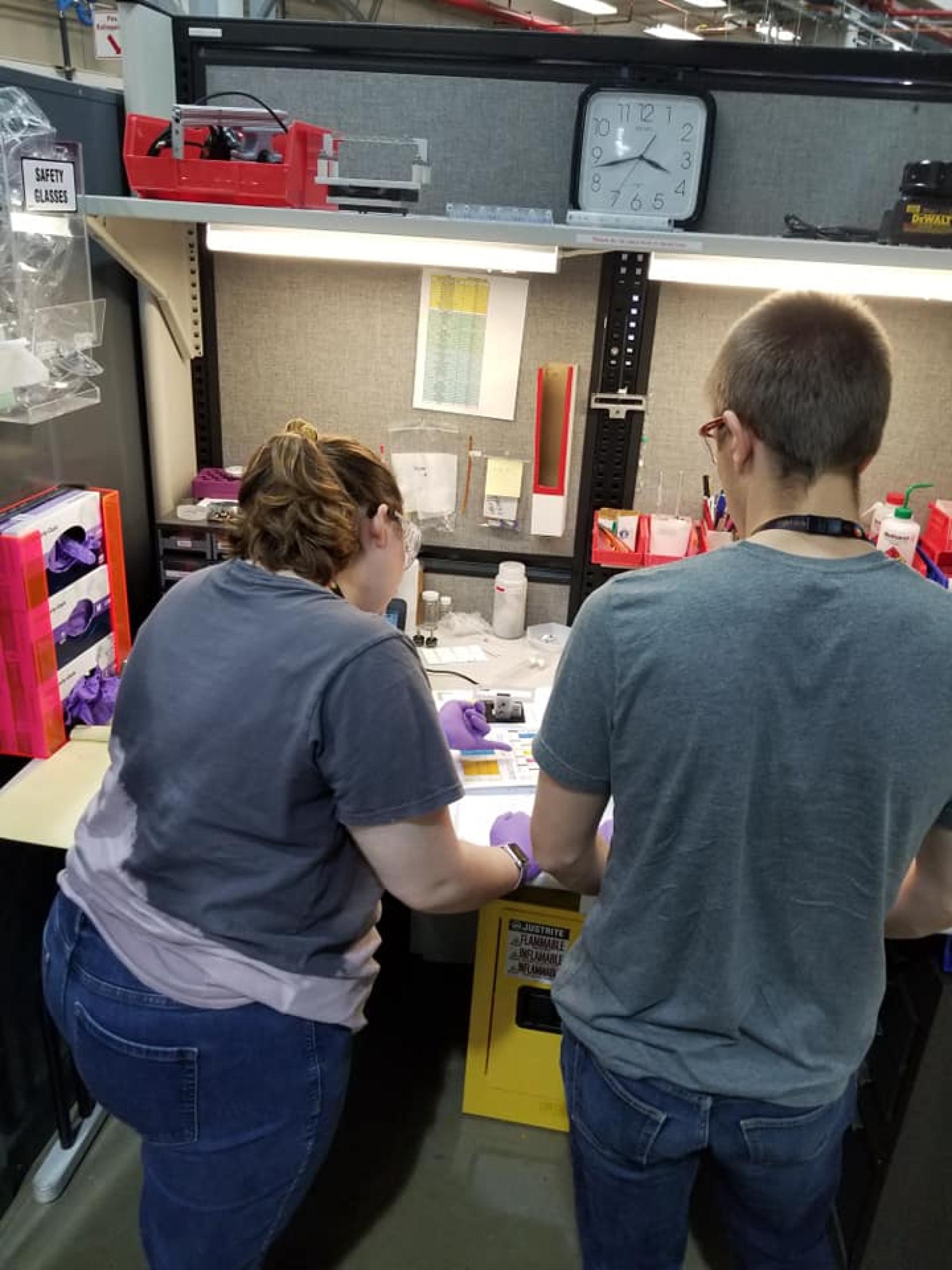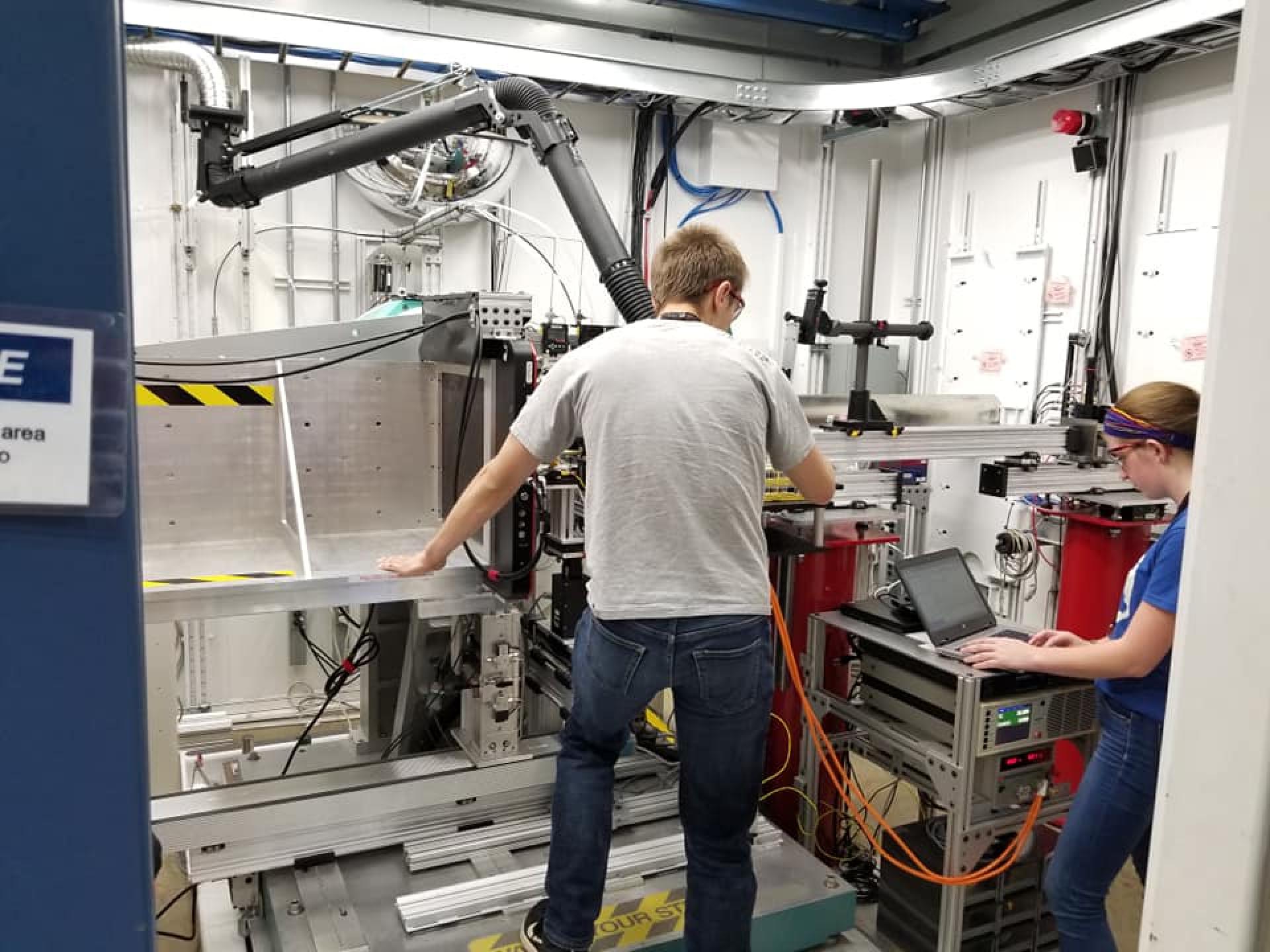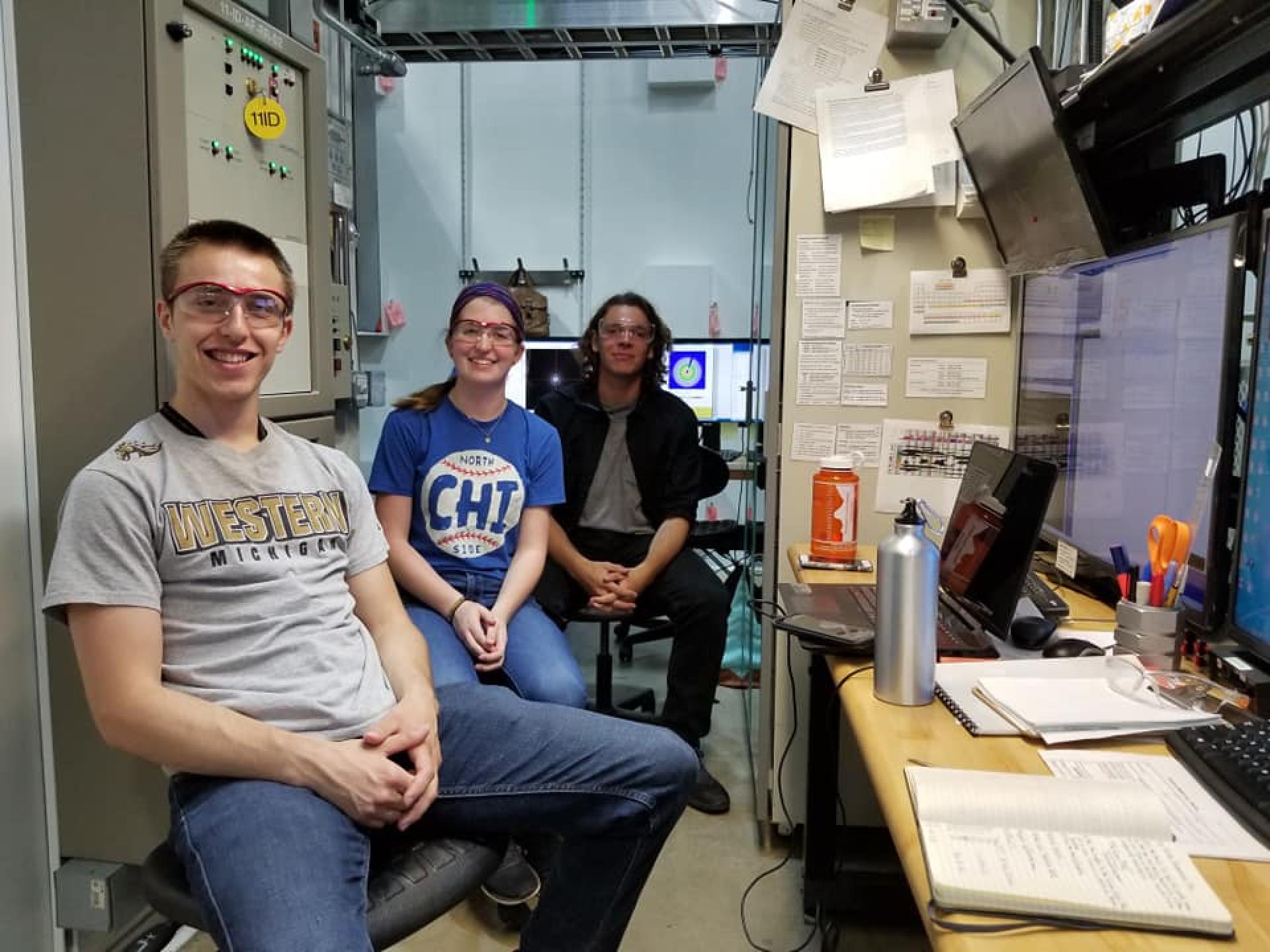Students are running tests on ionic liquids to find out more about their structure and how they interact with alkali metals like lithium, sodium and cesium.
“Central to using ionic liquids in batteries is understanding what ions such as lithium do while dissolved by an ionic liquid,” said Boaz.
To find that out, the North Central students used just one of the many applications of the APS. “Our specific experiment used X-ray beams to take a look at structures of ionic liquids from room temperature up to 180 degrees Celsius,” said Formanski.
The researchers combined materials to make synthetic ionic liquids for use with the APS. Analysis of the way the X-ray beams scatter through samples of the liquids will help the students determine their viability for use in batteries.
“Electrolytes carry a charge through a battery. Some batteries use metals like lead and cadmium as electrolytes,” Formanski said. “Ionic liquids have a lot of potential uses, especially as battery electrolytes.”



